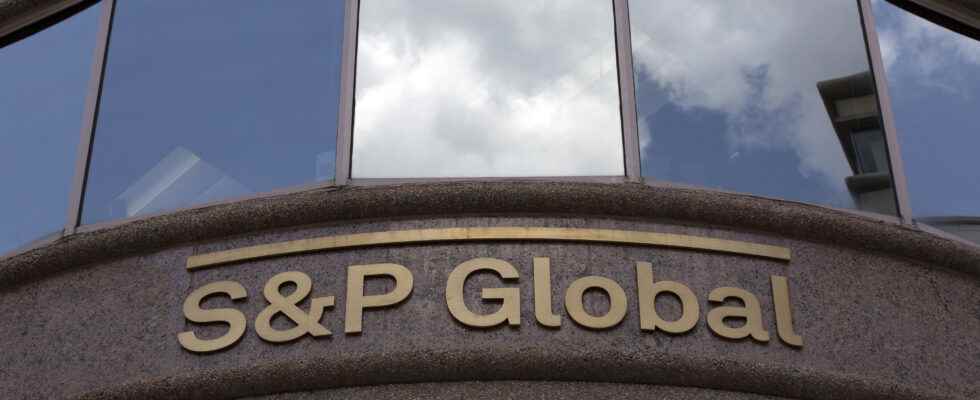(BFM Bourse) – In very rare cases, it happens that companies have, on paper, a better credit rating granted by the agencies than that of their reference country. However, comparison is not right, the methodology and especially the associated risks being very different.
Will LVMH soon be as well rated by Moody’s as Belgium or the United Kingdom? The question – very theoretical – arises. The famous rating agency recently revised upwards the outlook associated with the group’s “A1” rating from “stable” to “positive”. This means that Moody’s could in the future raise its assessment of the world leader in luxury by a notch.
According to the rating scale of the agency, LVMH would then obtain the grade “Aa3”, which corresponds to the sovereign rating of Belgium and the United Kingdom, assuming of course that Moody’s does not raise the rating of these two countries. LVMH’s rating would obviously remain lower than that of France, which is rated “Aa2” by Moody’s.
Beyond this example, which we agree is somewhat virtual, there are very few cases where a company is “better” rated than the country with which this company is associated (see our box below for some examples) .
Microsoft has the “AAA”, not the USA
“It is rare for a corporate issuer to have a better rating than the country with which it is associated – we currently have 92 (corporates and financial institutions, and local and regional authorities)”, underlines a spokesperson for S&P Global Ratings. .
Speaking example: Microsoft has, on paper, a better credit rating than the United States, the computer giant being rated “AAA” by S&P Global Ratings, unlike the world’s largest economy.
But does comparing the rating of a company and a country really make sense? In the general opinion of the interlocutors we surveyed, the answer is clearly “not really”.
“There is little relevance in comparing a sovereign rating with that of a company. First of all, let’s remember that there is a difference in terms of methodology. There is a transparent and freely accessible but distinct analytical approach depending on of the type of entity rated”, underlines the spokesperson of S&P Global Ratings.
For example, S&P Global assesses the prerogative of a State to determine the currency it uses, as well as the fiscal and political legal framework in which it operates, which is obviously not the case for a company .
Different risks
In addition, “the risk associated with the debt of a country is not comparable to that of a company”, adds the spokesperson for S&P Global Ratings.
“Some investors can compare a corporate with a sovereign, but the nature of the risks is different. On a corporate issuer, there may be an industrial risk, which is not the case for a country”, abounds Christine Kam, analyst at Octo Finance.
For Céline Antonine, economist at the French Observatory of Economic Conditions (OFCE) “we do not look at the same parameters for a State and a company”.
“For a sovereign, it is the sustainability of long-term debt that counts, with the evolution of interest rates, the ability to honor its commitments but also the level of tax revenue and the rationalization of public expenditure. a company the horizon is shorter, and the structure of the indebtedness (bank debt, market debt, etc.) as well as the generation of cash will be monitored”, develops the expert.
Different realities
Thus “if the rating scale is the same, the ratings cover different realities”, continues Céline Antonin. This even if “there is a correlation” between countries and companies, she recalls. The downgrading of a country’s credit rating can thus influence that of national companies. The reverse is obviously very rare.
“There are exceptions, especially in the case of emerging countries, when a country’s debt is closely linked to that of a large company. This is the case, for example, of Petrobras with Brazil”, observes Christine Kam.
It is worth pointing out as another limitation the fact that the States have many fiscal and legal instruments that companies do not have at their disposal, such as the levying of new taxes.
Moreover, in the event of default, a country never disappears – unlike in many cases companies which can also be bought out by their creditors via debt-to-equity swaps – but sees its debt restructured. Sometimes at the cost of tough negotiations with lenders, as was the case for Argentina, for example.
BOX: some examples of companies with a rating higher than that of the country where they are present, according to S&P Global ratings (as of the end of October)
United States (AA+)
Microsoft (AAA) Johnson & Johnson (AAA with negative outlook)
Italy (BBB)
Enel (BBB+) Eni (A-) Hera (BBB+) SNAM (BBB+) Terna (BBB+) BNL (BBB+)
The local branches of BNP Paribas, Barclays, Bank of America and Deutsche Bank
Japan (A+)
Fujifilm (AA-) Osaka Gas (AA-) Tokyo Gas (AA-)
Spain (A)
Banco Santander (A+)
United Kingdom (AA)
Wellcome Trust (AAA), a UK-based charitable foundation.
India (BBB-)
HCL Technologies Limited (A-) Infosys (A) Reliance (BBB+) Wipro (A-)
Julien Marion – ©2022 BFM Bourse
